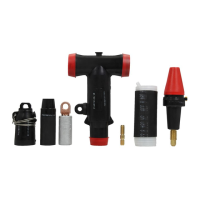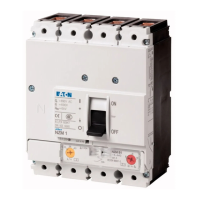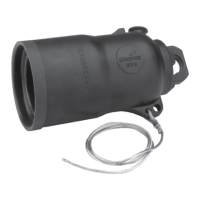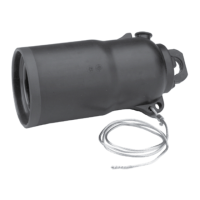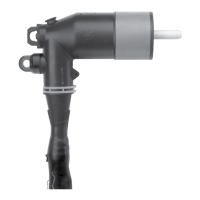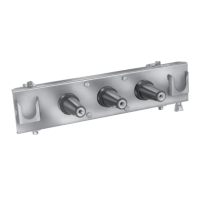Testing with the voltage limiter ON and a limit value set
When testing a regulator with external power, it is recom-
mended that FC 80, Voltage Limiter Mode be set to Off.
When testing in the auto mode with the voltage limiter on,
there may be problems getting the regulator to operate
in either raise or lower direction if the external voltage is
greater than the voltage limit settings.
No band indicators
If the band indicators are not working when the voltage is
out-of-band, check the following:
1. Check FC 56, Reverse Sensing Mode. If FC 56 is set to
Lock Forward and there is reverse power, the indica-
tor will not display and the voltage will not regulate.
2. Check FC 57, Reverse Current Sense Threshold and
*Load Current (*Metering PLUS). If the load current
is less then the reverse threshold current, the indicators
will not work and the regulator will not regulate.
3. If the regulator has been serviced and the current trans-
former circuit was involved, check the polarity of the
current transformer. If the polarity is reversed, the band
indicators will not display.
Metering troubleshooting
Load voltage secondary (output voltage), does not
match the voltmeter test terminal voltage
When the output voltage at FC 6 is several volts different
from the voltage at the voltmeter test terminals, verify that
the following function code settings are per the nameplate:
1. Verify FC 43, System Line Voltage (Load Voltage) is set
per the nameplate value.
2. Verify FC 44, Overall PT Ratio is set per the nameplate.
3. Verify RCT Control Tap located on the back panel of the
control assembly is set per the nameplate.
4. Verify Control Winding E Tap and Differential
Transformer P Taps, if present, are set per the name-
plate. E taps are located on the terminal board on the
tap-changer inside the tank. P taps may be located on
the terminal board on the top of the tap-changer or on
the differential potential transformer located on the side
channel inside the regulator tank.
When all the settings are set per the nameplate, the regula-
tor is in neutral, and the system line voltage or load voltage
matches what is stated on the nameplate, the voltmeter
test terminals on the control panel will read the value on the
nameplate.
No load current
When there is no load current reading at FC 9, Load Current,
Primary, or any of the metering components requiring
current as part of the calculation, check the C switch on the
back panel. The switch should be open. If the C is closed,
the current transformer is shorted and no current reading is
available.
Regulator will not tap beyond a certain tap
position
If the regulator will not tap beyond a certain tap position
and the position indicator limit switches setting are at 16
raise and 16 lower, check the Soft ADD-AMP settings: FC 175,
Soft ADD-AMP High Limit, and FC 176, Soft ADD-AMP Low
Limit.
Control calibration
All controls are factory-calibrated and should not need to be
recalibrated by user. However, calibration can be performed
for both the voltage and current circuits as follows:
CAUTION
Equipment Damage. Be mindful of polarity when using
an external source. Polarity reversal will result in control
damage.
WARNING
Explosion Hazard. Verify that both the neutral light and
the position indicator hand indicate neutral when the
tap-changer is physically in the neutral position. Lack
of synchronization will cause an indefinite indication
of NEUTRAL. Without both indications of neutral,
bypassing of the regulator at a later time will not be
possible, and the line must be de-energized to avoid
shorting part of the series winding. Failure to comply
can result in serious personal injury or death and
equipment damage.
CAUTION
Equipment Damage. Be mindful of polarity when using
an external source. Polarity reversal will result in control
damage.
106
CL-6 SERIES CONTROL INSTALLATION, OPERATION, AND MAINTENANCE INSTRUCTIONS MN225016EN January 2016

